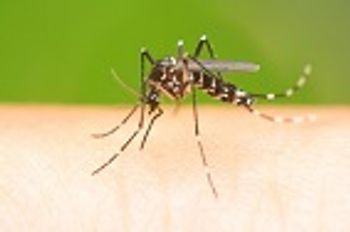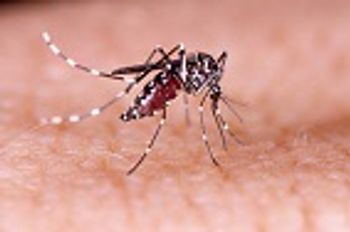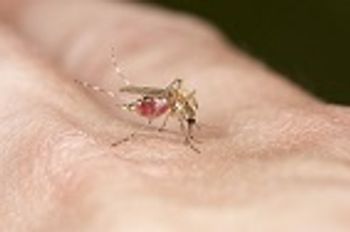
The Centers for Disease Control and Prevention (CDC) is currently working with local health officials to investigate what seems to be the first case of locally-acquired Zika in the United States.

The Centers for Disease Control and Prevention (CDC) is currently working with local health officials to investigate what seems to be the first case of locally-acquired Zika in the United States.

Groundbreaking research has uncovered several possibilities to potentially cure HIV in patients receiving antiretroviral therapy (ART), while a new drug prohibits the virus from maturing, preventing viral infection of new cells.

A norovirus vaccine developed by Takeda is the first and only one to be tested in human trials.

The belief that patients may face increased risks of complications following reduced antibiotic use after experiencing self-limiting respiratory tract infections (RTIs) may not be well-founded.

Despite one reported death from West Nile Virus in November 2015, Louisiana health officials report a decline in the occurrence of the mosquito-borne illness.

Which came first: high Zika viral load or a diminished immune system? This is a question that epidemiologists and medical experts from the Centers for Disease Control and Prevention are pondering in regards to the recent case of Zika identified in Salt Lake City, Utah that may have resulted in the individual's death.

That may be the “$64,000 Question” facing clinicians in South America and the Caribbean, where 3 viruses linked with the Aedes aegypti mosquito have caused concurrent epidemics, resulting in confusion as efforts are made to diagnose and treat them.

The Hawaii State Department has confirmed an open investigation of the hepatitis A infection in Oahu, Hawaii.

With more humans encroaching the forest habitats, there are more opportunities for the acquisition of pathogens from their natural hosts.

The number of confirmed cases in the outbreak has been attributed to the reluctance of some to be vaccinated.

On the heels of new data suggesting the Zika epidemic will last for another 3 years, a new case reveals there may be a new mode of zika transmission.

Congress failed to reach a decision on Zika funding today as a new study reveals that the epidemic is expected to last well into 2019.

With the 2016 Rio Olympic Games less than one month away, the Centers for Disease Control and Prevention (CDC) released a statement summarizing their assessment of the risk of Zika importation by those returning from the summer Games.

A new technological approach to genome editing that can clear latent and productive herpesvirus infections from human cells in vitro could eventually lead to a potent prophylactic.

The US Food and Drug Administration (FDA) just approved the first test to detect human papillomavirus (HPV) using specific samples.

Due to an ongoing investigation of a multistate outbreak linked to contaminated liquid docusate products, the Centers for Disease Control and Prevention (CDC) advised healthcare providers against the use of these products.

A molecule in green tea, known as epigallocatechin (EGCG), blocks the entry of a Brazilian strain of Zika virus into host cells, and may hold potential benefit for prevention of Zika virus infections, a new study has found.

Although researchers have made progress in identifying potential medical countermeasures to hinder the spread of Middle East respiratory syndrome (MERS), the virus is still spreading.

As Congress debates action to combat the virus, a patient in Salt Lake County, Utah has lost the fight against Zika.

According to a recent study, screening for microcephaly can no longer adequately determine whether or not a baby has suffered abnormalities due to a congenital Zika infection.

Since May, there have been nine confirmed cases, with one fatality, in Los Angeles, Long Beach, and Orange counties. According to the California Department of Public Health (CDPH), most of those infected have been gay and/or bisexual men.

Both inappropriate catheter use and rates of catheter-associated urinary tract infections (UTIs) can be reduced in the non-intensive care unit (ICU) setting.

In a recent clinical alert, the Centers for Disease Control and Prevention (CDC) warned US healthcare facilities about Candida auris, an emerging multidrug-resistant (MDR) yeast that is causing severe, and sometimes fatal, healthcare-associated infections.

Because protection against this mysterious virus is essential, as is a need to understand it, researchers have been using the resources that are available to learn more about Zika and how to prevent infection.

Exactly how to screen for and, thus, diagnose Zika virus remains a bit of a moving target for clinicians as the risk for localized transmission of the mosquito-borne disease rises for some parts of the United States with the arrival of summer.

One month before the summer Olympics are set to be begin in Rio de Janeiro, Brazil amid the threat of the Zika virus, another health threat has been identified in the city.

A new study may uncover the mystery behind why the Ebola virus disease is fatal to only some, and lead to pathways to new treatments.

Researchers have found that Aedes aegypti mosquitoes infected with these bacteria were less likely to become infected with the Zika virus after feeding, and that those who did become infected were unable to transmit the virus in their saliva.

A new bacteriophage (phage) treatment-based approach to fighting Clostridium difficile (C. difficile) colonization and infection may one day provide for effective treatment against this potentially lethal disease.

“We really won’t be able to protect the American people to the extent that we can, from the technology standpoint, without that funding.” states Stephen Redd, MD, director of the Office of Public Health Preparedness and Response (OPHPR) at the Centers for Disease Control and Prevention (CDC).